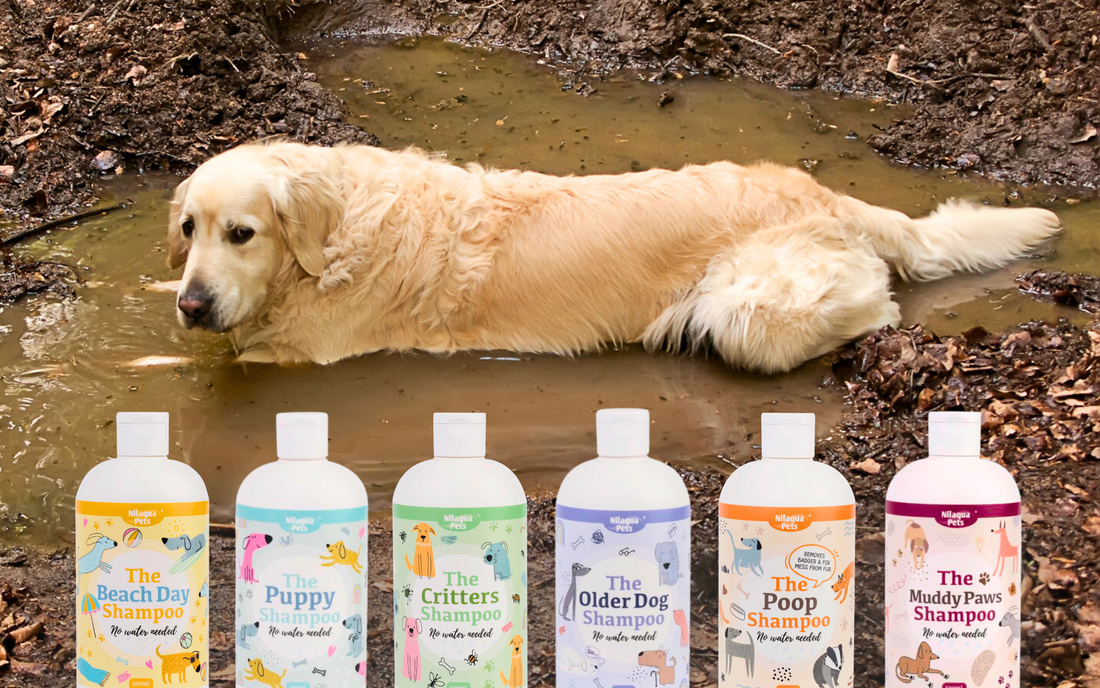The hidden garden dangers for dogs
Gardens are the perfect place for dogs to exercise and have fun but even those that are fenced in can be potentially dangerous if common sense isn’t applied. With the better weather on us, we are all keen to spend more time in the garden and get on with our gardening tasks and our puppies are often very keen to help us.
Dogs, especially puppies, are more at risk as they are very curious and a common way for them to learn is to eat what they find. Clippings and prunings have a higher risk as they are tastier and often carry the owners’ scent.
Therefore, the garden can be full of potentially dangerous plants and creatures for dogs. The most common ones are listed below.
Spring bulbs
Our pretty and much-loved spring bulbs, like tulips and daffodils can be some of the most dangerous ones for our dogs. Big, greedy dogs are the worst offenders as they either think bulbs are for eating or playing a doggy hide-and-seek (human hides it and they dig it up to eat it).
- Daffodils: effects from poisoning can include vomiting, stomach upset and salivation, but can escalate to dogs appearing sleepy, wobbly on their legs, or collapsing. In more serious cases fits and changes to heart rate, body temperature and blood pressure. Dogs can also become unwell if the flowers are eaten, or if they drink water from a vase containing daffodils
- Tulips: the toxins found in this plant cause irritation to the mouth and gastrointestinal tract and usually only result in drooling, vomiting and diarrhoea. Serious cases are rare, but effects could include heart problems and breathing difficulties
- Spring crocus: these flower in spring and are said to be of low toxicity and may only cause a mild stomach upset if eaten. These bulbs are not to be confused with autumn crocus, which flower in autumn and can cause severe stomach upset, kidney and liver problems and bone marrow depression
Shade-loving plants
Plants that love dampness and shade, such as Lily of Valley, can be fatal. All parts of Lily of Valley is poisonous and whilst it’s not usually planted by humans, it can just appear in the garden. If you find it in your garden, best to remove it.
Lilies
Other poisonous plants to dogs include some lilies, such as tiger lilies, Easter lilies, which can kill with the bite of a petal as they contain toxic substances.
Compost
Compost is usually full of mouldy food and garden waste. Some of this can produce dangerous mycotoxins which are highly dangerous to dogs. Mycotoxicosis, which is poisoning by-products contaminated by fungi, can be fatal. Dog owners should always keep compost out of reach and seek urgent veterinary advice if they suspect their dog has raided the compost bin.
Fertilisers
Fertilisers come in granular, solid and liquid form. While most aren’t hazardous, some can cause sickness and diarrhoea if swallowed or irritate your dog’s skin if brushed against. Products with additives such as insecticides are often the most dangerous.
Weed killer
Many weed killers contain glyphosate which can be dangerous if swallowed, licked or brushed against. Dogs who consume a significant enough amount may suffer breathing problems, heart rate issues and convulsions. If you plan to use weed killer, make sure your dog is safe inside to avoid any problems.
Slug and snail pellets
Metaldehyde-based slug and snail pellets are among the most dangerous and common poisonings vets see. Ingestion can cause severe poisoning and signs often occur within an hour.
Insecticides and pesticides
Insecticides and pesticides are typically used to get rid of so-called garden pests. But many contain dangerous chemicals such as metaldehyde or disulfoton, which are both very toxic to dogs. Read the instructions carefully and don’t use if there’s a potential risk.
Toads
Toads produce a venom through their skin when they’re under attack and toad venom poisoning can be fatal if left untreated. The toxins can cause dogs to foam at the mouth, vomit and show signs of distress such as pawing at the mouth and eyes.
What to do if your pet has been poisoned?
If you suspect your dog has eaten any of these, call your vet straight away. Try to take a sample of the dangerous item or substance, or a label containing its ingredients, to the vet.
Click on the link for the full list of dangerous garden plants. factsheetpoisonoussubstances09.pdf (dogstrust.org.
Whilst the above may sound very scary, let's not forget that dogs are clever creatures, often more clever than we give them credit for. So just go and enjoy that gorgeous garden of yours, but if your dog is showing too much interest in some plants, check out that he is not eating something he shouldn't. :-) Check out our wide range of 100% natural, safe and healthy chews which are safer option for your dog to chomp on.
There are many more dangerous to dogs in your garden than just plants, please read our Ultimate Guide for First Time Dog Owners to address all other dangers both in your garden and inside your home.





